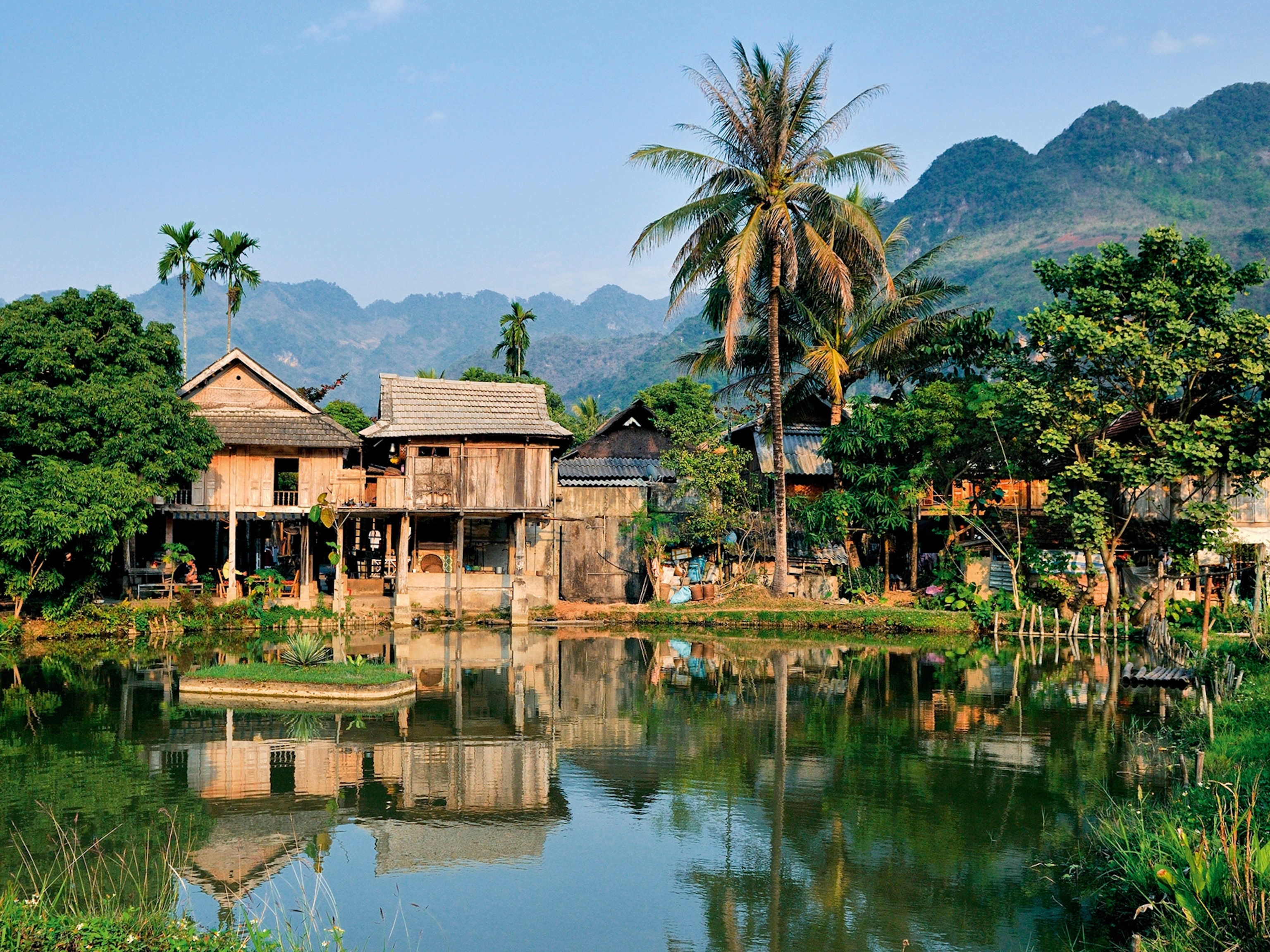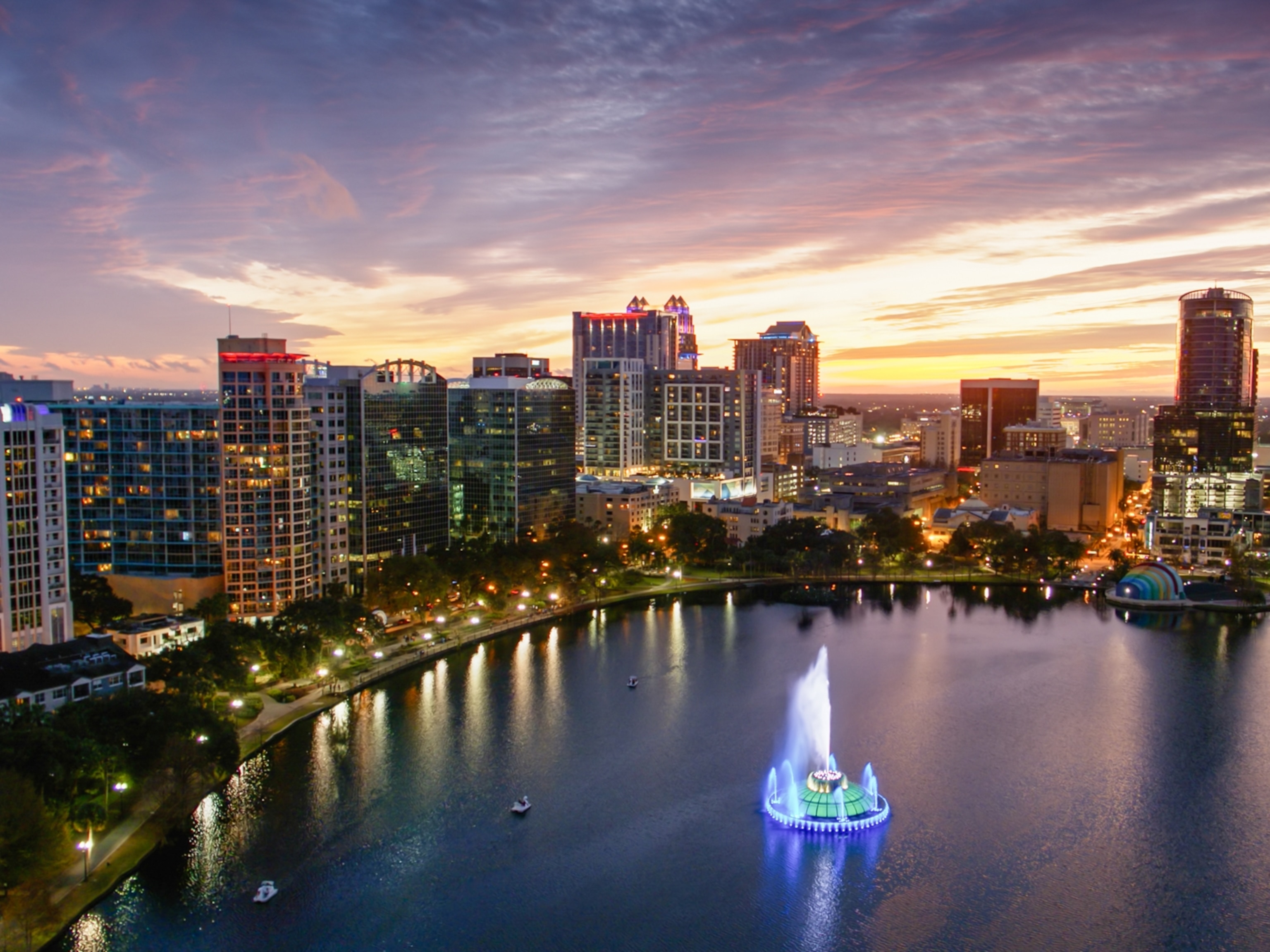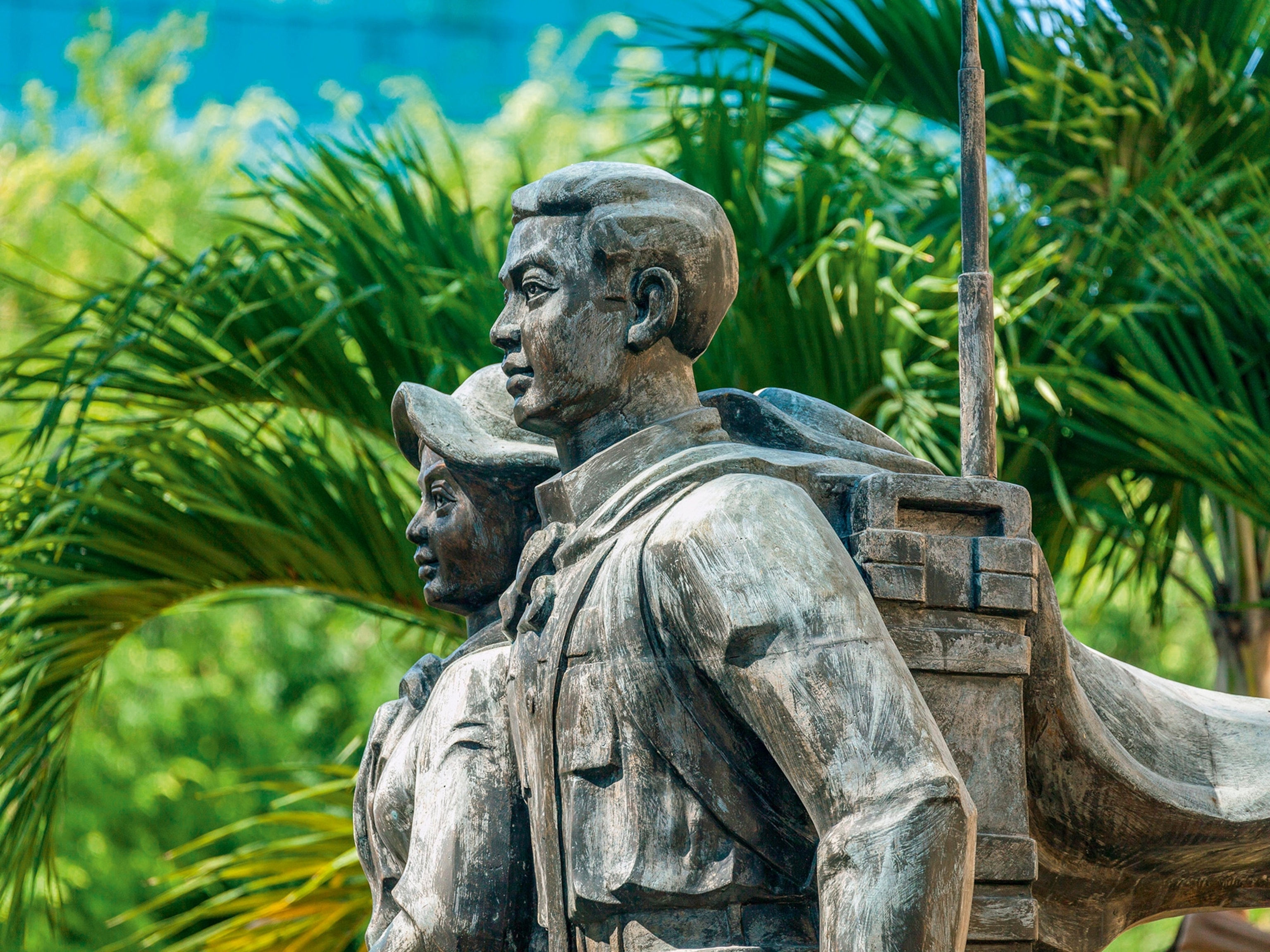
The Continuing Glow of Vietnam
By Andrew Lam, with photographs by Catherine Karnow
Twenty years ago, I stepped onto a Hanoi street and into darkness. The electricity was out, and clouds obscured moonlight. The faint smell of incense wafted in the air, and I saw shadows flitting about and red dots spinning in circles on the streets.
My eyes adjusted: Local bicyclists had tied burning joss sticks onto their bikes’ spokes as a way to avoid one another. The heart of Vietnam had turned into a phantasmagorical temple, full of ghosts.
That Hanoi, that city shrouded in incense and shadows, is but a distant memory. Now neon lights up the night. Forty years after war’s end and the country’s reunification and political rapprochement with the West, Vietnam’s population has more than doubled.
Golf courses are replacing rice paddies. New cities have sprouted where only thatched-roof hamlets squatted, and high rises tower in once low-key metropolises like Hanoi, Da Nang, and Ho Chi Minh City. Even longtime residents fail to recognize their own city when they venture downtown.
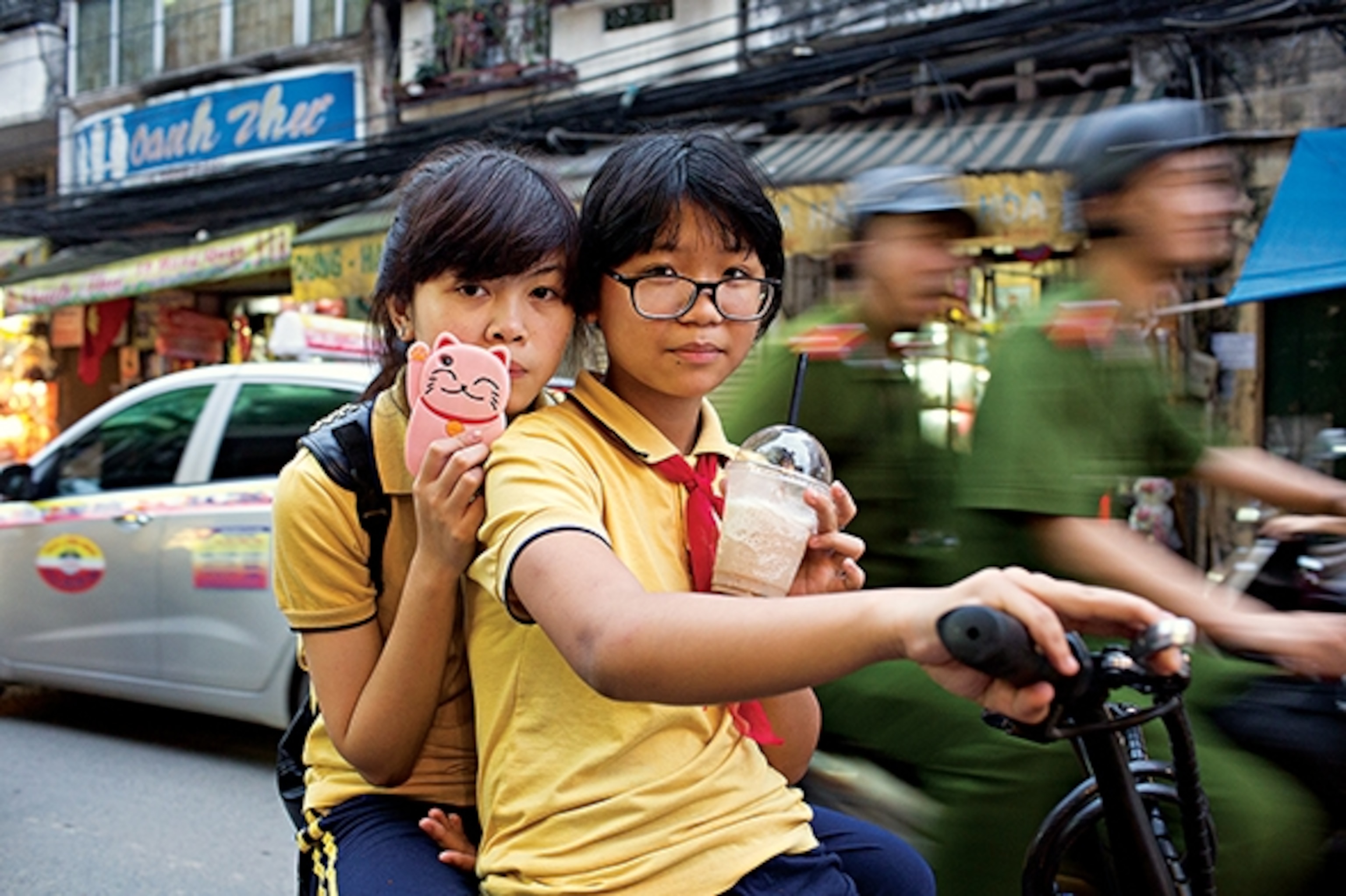
And the place once feared by drafted American GIs has become a bucket-list destination for backpackers, beach lovers, and yes, veterans on nostalgia tours. They come to see mountains veiled in morning fog and sand dunes glittering under tropical sunlight. They come to taste the fragrant cuisine and to enjoy the sultry nightlife. They come to swim in the sparkling sea and to shop for colorful textiles.
I left Vietnam as a child when communist tanks rolled into Saigon and ignominiously ended the Vietnam War for Americans. That was on April 28, 1975. My family fled, among the first wave of refugees. I was 11 years old.
I grew up and became an American citizen and a writer and journalist. But I have never forgotten Vietnam, and have returned many times to witness my native land emerge from behind the bamboo curtain.
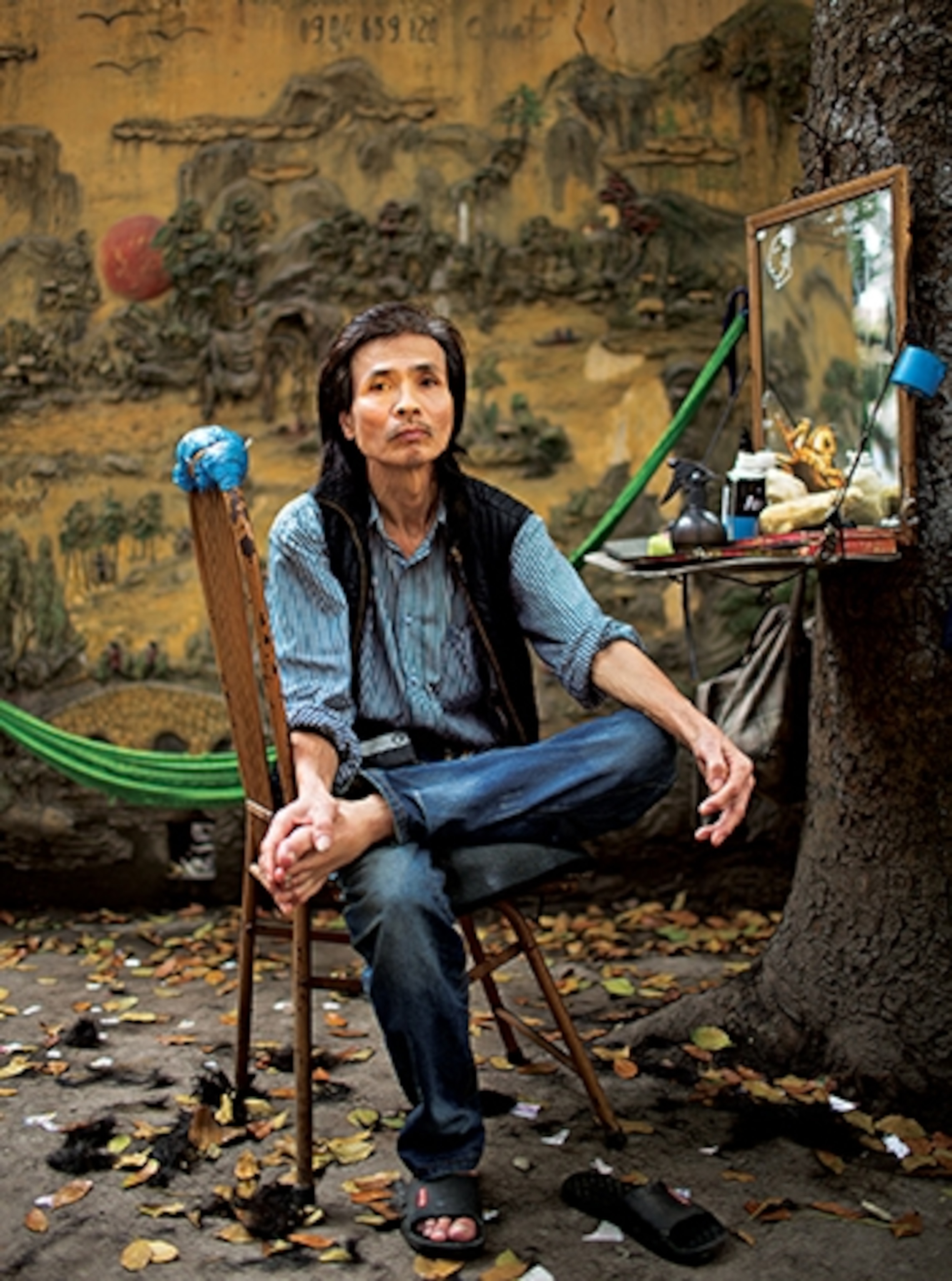
If stories of bicycles in dark nights, of mud and bent backs and long lines for food rations, formed the bulk of the narrative I told a quarter of a century ago, the story I tell now is an entirely different one—that of a country steeped in modernity and change, and a society integrating with the global culture and economy at a breakneck speed.
In Hanoi, the rusty bicycles have long been replaced with Honda motorcycles. The old quarter, with its narrow streets and historic homes, is now filled with video arcades and karaoke bars, with cafés and shops selling candies and dried apricots. Even the ancient lake of Hoan Kiem shimmers at night, its perimeter strung with lights.
In Ho Chi Minh City, still popularly known as Saigon, you can have your pick: Wander around any small neighborhood and you may still run into old men sitting on small wooden stools in alleys drinking coffee and smoking; or, in the evening, hang out at the Chill Sky Bar on top of the AB Tower to watch the sunset over city boulevards running like golden rivers swift and furious below.
So much has changed, yet my homeland remains an astonishing beauty, a country shaped by mountains and rivers and the eternal sea lapping at her shores. She’s also made up of smiles and laughter, of leisure and of celebrations. What I think is odd for a communist country: Vietnam’s temples and churches are always full of worshippers on religious holidays.
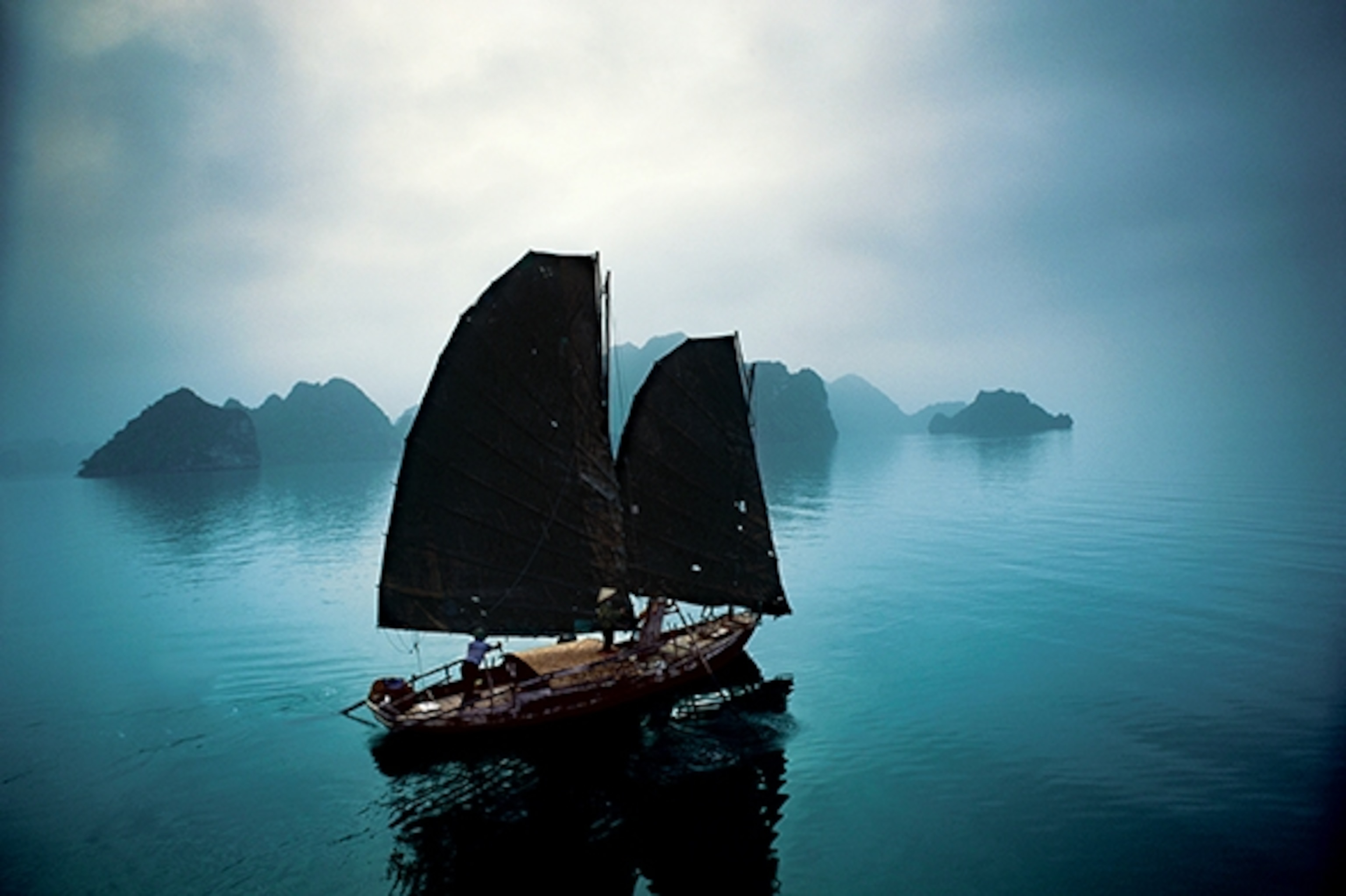
Some of my favorite memories: watching fishermen in Phan Thiet landing their boats on shore with the day’s catch, their silhouettes wavering against the setting sun, and the sea a pointillist carpet of silver stretching toward the horizon; or sailing down the Perfume River of Hue, Vietnam’s imperial city, one summer evening, the air redolent with the scent of blooming lotus in nearby ponds, the old boatwoman crooning a folk song about the storied citadel and about those who have left yet long to return to the river Perfume.
I remember sitting at a campfire on the side of Lam Vien mountain overlooking my hometown, Da Lat. Thousands of French-built villas dotted the hillside, and my best friend accompanied with a guitar three young Lat women singing romantic songs.
- National Geographic Expeditions
One recent early morning out on the balcony of my hotel in downtown Saigon, the roaring din of motorcycles and cars and construction was so deafening that I began to doubt my own memories of the incense wafting in the dark.
One can get nostalgic thinking of what is lost and gone. Or one can get on a motorbike and ride with the endless flow of traffic, filling up on the energy of this youthful yet eternal place. Listen to the laughter. Listen to the honking horns. Long night has journeyed into day. The once wounded nation is healed, and its gaze forward is dauntless.
This piece, written by Andrew Lam, first appeared in the April 2015 issue of National Geographic Traveler magazine.
> Related:

